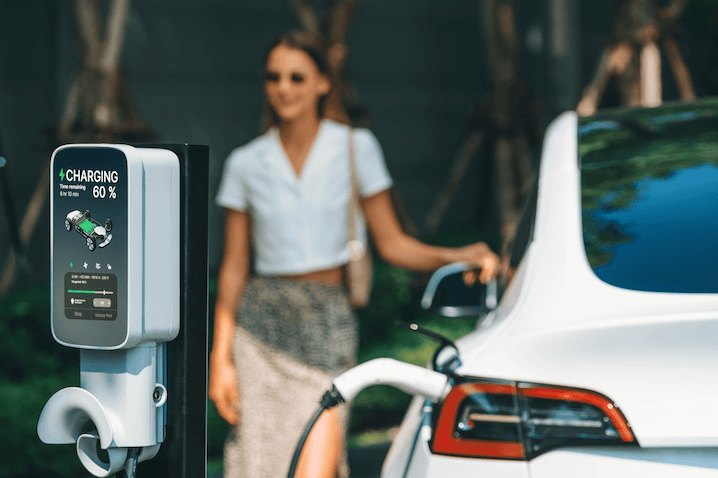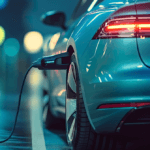
Operating an EV in New England
Driving electric vehicles (EVs) in cold weather raises important considerations regarding battery capacity and safety, especially in challenging environments like New England. Queries about “do electric cars work in cold weather?” highlight significant concerns, but advancements in EV batteries and cold weather strategies have ameliorated many of these worries. As the second article in a series of four posts on Electric Vehicles in New England, this discussion extends our exploration into the adaptability of electric vehicles amidst the cold, showcasing how driving range and battery performance are effectively managed even under low temperatures.
This narrative delves into the existing infrastructure for EVs in the region, the intrinsic benefits of electric vehicle usage, and tackles the common hurdles experienced by EV owners during the winter months. Looking ahead, the future of electric vehicles in New England appears promising, supported by the development of public charging stations and improvements in electric vehicle batteries designed for cold weather resilience.
The Current State of EV Infrastructure in New England
In response to the growing demand for electric vehicles (EVs), New England is witnessing a significant transformation in its EV infrastructure, supported by both state and federal initiatives.
- Federal Support and State Initiatives: The Inflation Reduction Act and the Bipartisan Infrastructure Law have infused additional funds into the region, enhancing the accessibility and spread of public charging stations. Furthermore, the Federal Highway Administration’s approval of state plans for EV charging infrastructure deployment underscores a unified effort towards electrification. The National Electric Vehicle Infrastructure (NEVI) Formula Program is a pivotal element in this transition, providing funding across Fiscal Years 2022 to 2024, with the allocation varying by state.
- State-Specific Developments: Each state within New England is taking unique strides towards expanding its EV infrastructure:
- Connecticut boasts 415 miles of EV Charging Corridors, with NEVI Formula Program funding supporting its expansion.
- Maine, leading with 1,105 miles of EV Charging Corridors, selected contractors to build stations at seven sites, demonstrating proactive steps towards infrastructure enhancement.
- Massachusetts is not only expanding its charging corridors (851 miles) but also distributing $60 million over five years from the NEVI program, primarily for charger stations along major highways.
- New Hampshire and Rhode Island are also making notable progress, with New Hampshire developing a comprehensive plan for EV infrastructure deployment, prioritizing key interstate routes.
- Looking Ahead: The U.S. government’s $2 trillion infrastructure proposal, aiming to install 500,000 new public charging stations by 2030, sets an ambitious roadmap for EV adoption. In New England, states like Vermont are leading in charger installations, though the coverage remains uneven. Initiatives like Electrify America’s plan to install fast-charging stations in New Hampshire highlight the ongoing efforts to bridge these gaps.
This concerted push towards enhancing the EV infrastructure in New England not only addresses the current needs of EV owners but also lays a solid foundation for the future of sustainable transportation in the region.
Benefits of Driving an Electric Vehicle in New England
Driving electric vehicles (EVs) in New England offers several key benefits, especially during the cold, snowy winters:
- Enhanced Performance in Snow:
- EVs are equipped with modern batteries that maintain efficient mileage, even in cold weather.
- The lower center of gravity, due to the placement of batteries, ensures better handling on snowy and icy roads.
- Improved traction and handling are benefits of the EVs’ lower center of gravity and better weight distribution, which are particularly advantageous in snowy conditions.
- Cost and Energy Efficiency:
- Despite a higher upfront cost, EVs lead to long-term savings through lower operating and maintenance costs, complemented by potential incentives and rebates.
- Electric vehicles are remarkably energy-efficient, converting 80-90% of the stored energy in their batteries to movement, compared to only 30% for internal combustion engine vehicles.
- Cold Weather Strategies for EVs:
- Most EVs feature a preheat function to warm the cabin while plugged in, mitigating the range reduction caused by heating the interior from extreme cold.
- Additional tips for conserving energy in winter include keeping cabin heat below 70°F, utilizing heated seats and steering wheels, parking in a warm garage, and planning routes and charging with winter conditions in mind.
These strategies not only enhance the driving experience in New England’s challenging winters but also underscore the practicality and advantages of EV ownership in the region.
Challenges and Solutions for EV Owners
Electric vehicle (EV) owners in New England face unique challenges during the cold months, but several solutions and strategies can mitigate these issues effectively:
- Battery Performance and Management:
- To address reduced battery capacity in cold weather, it’s recommended to keep the battery charged above 20%. Modern EVs are equipped with battery management systems that optimize performance in cold conditions, reducing the impact on driving range.
- Utilizing pre-heating features while the EV is plugged in can conserve battery power for driving, maximizing charging speed and efficiency.
- Installing a heat pump can enhance efficiency, making EVs less impacted by cooler temperatures.
- Driving Safety and Efficiency:
- For optimal operation, it’s crucial to clear all sensors of snow, ice, and debris. EVs with regenerative braking systems can adjust this feature in snow mode to prevent potential skidding on icy roads.
- Employing winter tires designed specifically for cold weather can improve grip on icy and snowy roads, enhancing overall performance.
- Driving smoothly, anticipating stops, and gradually slowing down can maximize the benefits of regenerative braking and conserve energy.
- Strategic Planning and Preparedness:
- Keeping the EV plugged in when not in use allows the car to draw power from the grid to heat the battery, maintaining charge.
- Scheduling regular stops at charging stations prevents range anxiety and ensures sufficient power to reach destinations.
- Carrying a survival pack with essentials like a shovel, blanket, and snacks can prepare drivers for unexpected delays during severe weather conditions.
Future Outlook for Electric Vehicles in New England
As the landscape of electric vehicles (EVs) in New England evolves, the future presents an electrifying vista of possibilities and advancements. The ISO New England draft provides a glimpse into this future with two distinct scenarios that map out the trajectory of EV adoption in the region:
- EV Adoption Scenarios:
- Full Electrification: An optimistic view projecting a rapid increase in EV ownership, serving as an upper boundary for potential growth.
- CELT 2023: A more conservative, yet realistic forecast, predicting the likely pace of EV adoption over the next decade.
- Legislative and Technological Milestones:
- The Inflation Reduction Act and the EPA’s Clean School Bus Program are pivotal in shaping the EV landscape, alongside the ambitious 2030 goal for light-duty vehicle sales set by the White House.
- Connecticut’s proposed adoption of updated emissions standards by fall 2023 for cars and trucks aims to significantly reduce emissions and increase the availability of zero-emission and plug-in hybrid vehicles.
- Technological Innovations and Market Dynamics:
- Advancements in battery technology and the proliferation of fast-charging infrastructure are poised to alleviate range anxiety and make EV charging as convenient as refueling traditional vehicles.
- The integration of autonomous driving technology and vehicle-to-grid (V2G) capabilities heralds a future where EVs not only serve transportation needs but also contribute to the stability and sustainability of the power grid.
The synergy of policy support, technological advancements, and consumer adoption is steering New England towards a future where electric vehicles play a central role in achieving a sustainable and innovative transportation ecosystem. As always Safety Northeast Insurance Agency has your back!
FAQs
Charging Electric Vehicles in Cold Conditions
Q: Does cold weather affect the charging of electric vehicles (EVs)?A: Yes, cold weather can slow down the charging process for EVs. Batteries need to be warm enough for electrons to move effectively, and this becomes more challenging as temperatures drop. Fast-charging stations require the batteries to be even warmer, which can further complicate charging in cold weather.
Optimal Temperatures for Electric Vehicles
Q: What temperature is considered too low for operating electric cars efficiently?A: According to the University of Michigan Energy Institute, temperatures below 40 degrees Fahrenheit can negatively impact the charging power and overall performance of electric vehicles.
Best Practices for EV Maintenance in Cold Weather
Q: Is it advisable to keep an EV plugged in when it’s cold outside?A: Yes, it’s recommended to keep your EV plugged in during cold weather. This helps to keep the battery warm, reducing the need for the car to use extra energy to heat up the battery when starting. Planning your route to include charging stations is also a smart strategy in cold conditions.
Challenges Faced by Tesla Owners in the Cold
Q: Have Tesla owners experienced difficulties with charging during cold spells?A: Indeed, there have been reports from Tesla owners about challenges when trying to charge their vehicles in extremely cold weather, including incidents where car doors were frozen shut and batteries wouldn’t accept a charge, leading to some owners being stranded.

 Previous Post
Previous Post Next Post
Next Post